NIL
NIL is changing college sports; for better or worse?
HUNT VALLEY, Md. (TNND) — It’s been nearly four years since the NCAA enacted a new policy allowing college athletes to profit from their name, image and likeness, and just a few weeks since a federal judge opened the door for college athletic departments to pay athletes directly. Much of the details are still being […]
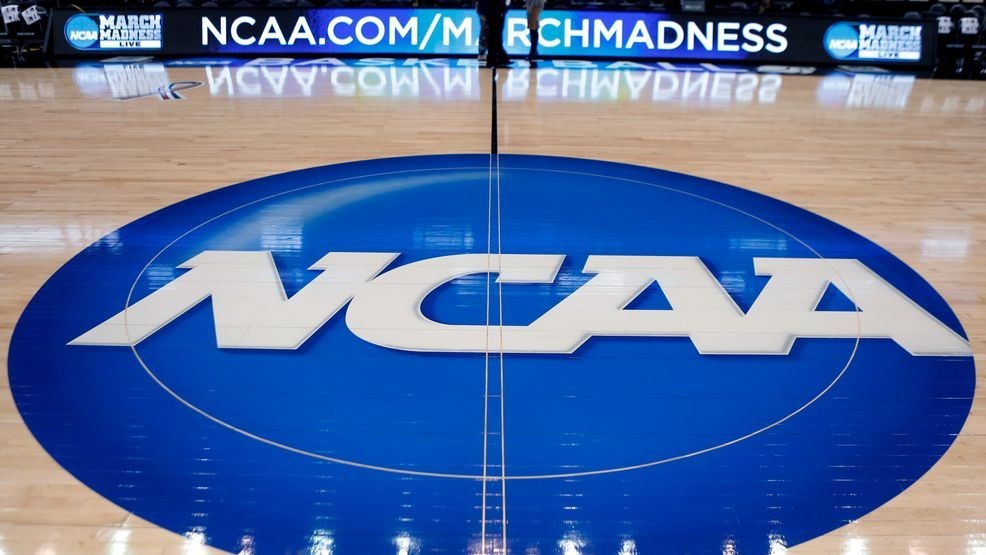
HUNT VALLEY, Md. (TNND) — It’s been nearly four years since the NCAA enacted a new policy allowing college athletes to profit from their name, image and likeness, and just a few weeks since a federal judge opened the door for college athletic departments to pay athletes directly.
Much of the details are still being worked out in the courts. Key components like roster limits, scholarship limits and payment pools are still up in the air.
As is a governing body to oversee all of these new rules, since most current regulation is a patchwork of state laws, legal settlements and NCAA rules.
But, we are starting to see the impacts of college athletes getting paid – and what it means for the enterprise as a whole.
Depending on who you ask, the historical shift is: long overdue for athletes who’ve spent thousands of hours grinding for their craft; late to the party in terms of global sports; the official death certificate for amateurism and the “student” side of “student-athlete”; or, an inevitable reality that has to run wild before it gets reined in and regulated.
To the league itself, it’s a positive step.
When a judge granted preliminary approval for a framework for schools to pay athletes, NCAA President Charlie Baker said it would “help bring stability and sustainability to college athletics while delivering increased benefits to student athletes for years to come.”
The push for college athletes to get paid spans decades, with legal challenges and legislative efforts dating back to at least the early 2000s. Which is surprising, considering the NCAA has been a multi-million dollar industry for several decades, and a multi-billion dollar industry for about a decade.
That disparity is due to the idea of “amateurism,” a word many experts and analysts use when they cite concerns about completely commercializing college sports. That idea goes back more than a century, to 1800s England, where sports were only for the wealthy, and the working class didn’t want them to be able to pay their way to victory.
“I don’t want to say [amateurism] is going to die, but it will certainly be the commercial aspects that are going to permeate,” said David Hedlund, the chairman of the Division of Sport Management at St. John’s University. “I think we’re going to see and hear less and less about amateurism, and college sports are going to look more like professional sports, or a training ground for professional sports.”
The idea that sports are for enjoyment and the love of the game rather than money is a noble one. And players can love the game and make money off their talents at the same time.
But many experts say amateurism has long been dead; the NCAA was just, for whatever reason, the last organization behind the International Olympic Committee to let it die. It’s part of an effort to keep pace with the rest of the world. Overseas soccer and basketball players are spotted when they’re 12 to 14 years old, and go pro when they turn 18.
“We’re in a global marketplace,” said Matt Winkler, a professor and program director of sports analytics and management at American University. “We sort of have to keep up with the other nations if we want to strive and have those great moments in sports for our Olympic teams and our World Cup teams and so forth.”
Coaches have long been compensated, and universities have long profited off their sports teams.
“The money has always been there. It’s just a lot more front-facing now, I think, than it’s been in the past,” Hedlund said.
Some sports analysts say it was quite front-facing in this year’s NCAA Men’s Basketball Tournament.
March Madness was devoid of any significant upsets or Cinderella teams. For the first time in five decades, every team that made it to the Sweet 16 came from a power conference, including all four No. 1 seeds and all but one No. 2 seed.
And, every team that made it to the Final Four was a No. 1 seed.
ESPN analyst Stephen Smith said NIL deals and the now no-limits transfer portal are to blame for why mid-major programs didn’t see much success, and top-tier schools prevailed.
“If there was no NIL, if there was no portal and you have the mid-majors go 0-6 in the second round, please, we ain’t sweating that,” Smith said. “But when you’re able to point to rules that have been implemented that ultimately shows itself to have inflicted upon the game itself, that’s dangerous.
“College basketball as we knew it – which, to me, is all about March Madness – will cease to exist. Because there’s no madness.”
Experts say there is a serious question mark about the current state of how much colleges can pay to entice players, and how many times players can be enticed enough to transfer.
But not all believe it has to be the death of March Madness or competition in college sports. After all, there’s still Division 2 and 3 universities.
Richard Paulsen, a sports economist and professor at the University of Michigan, said it’s hard to gauge the impact of NIL deals and the transfer portal on competition. Because while the top ten or so power schools may be able to offer the most money to the elite players, there’s still a lot of talent out there.
“The top schools have an advantage in getting the A-level talent, but some of the players that might have sat on the bench at a top school previously could be enticed away with NIL money coming from a second tier school,” Paulsen said. “So I think the impact on competitive balance is maybe a little bit less clear.”
Paulsen says, as a professor, he is worried about the impact NIL deals – particularly million-dollar ones – can have on the students themselves, some 18, 19, 20 years old. It raises the question, does a teenager or young adult need this much money?
Shedeur Sanders is 23 years old, and his NIL valuation at the University of Colorado was roughly $6.5 million. Granted, he’s the son of NFL Hall of Famer and head coach for Colorado Deion Sanders.
But, his 2024 stats were top five in completion percentage, passing touchdowns and yards. Several analysts had him as the top prospect in the 2025 NFL draft, but he slid down to the fifth round, shocking much of the sports world.
Various reports place blame on other reasons – maybe he took more sacks than he should have, maybe NFL executives see traits we can’t see, maybe he bombed interviews with the managers, maybe it had to do with his Hall of Famer dad. And he certainly wouldn’t be the first prospect to get picked later than expected and prove all the teams that passed over him wrong.
But, he’s also losing money by going pro. The iced out, custom “Legendary” chain he wore on Draft Day reportedly cost $1 million.
“It is at least worth noting that five years ago, he wouldn’t have had the online presence that he had, and that could have turned off some NFL teams,” Paulsen said. “Without being in the rooms, I don’t know if it did, but that is possible, and it’s not something that would have been possible even five years ago.”
It begs the question, is it even worth going pro for these top-tier college athletes with insane NIL deals?
In the NBA, new data shows it may not be. The league announced last week just 106 players declared early for the 2025 draft. It’s the fewest since 2015. The number typically hovers around 300.
The drop in early entrants could be lingering effects of the extra COVID year.
But, next year, ten schools will pay their rosters somewhere in the neighborhood of $10 million, including several million dollars per top player. That’s far more than the players would make if they were a second-round draft pick in the NBA.
Winkler said the combination of competitive rosters and the scope of these NIL deals has more to do with this drop in early declarations.
“These deals are getting so big that unless you’re going to be a first round draft choice, maybe if you’re going to be kind of a lottery pick or a top 10, 15 pick, it would be better for you to exhaust your eligibility on a major team, because you’re going to make more,” he said.
So, it might be financially advantageous for athletes to wait on the pros. Some announcers were even suggesting Sanders should go back to college if the NFL didn’t deem him ready for the show. (NCAA rules prohibit him from doing so anyway; he declared for the draft and signed with an agent).
But what about the fact that these players, who become millionaires, are still students?
Schools are working to provide resources for these athletes so they can get advice on what to do with their wealth, so that they don’t spend it irresponsibly. Which is not to assume all of them would; it goes without saying this money could greatly benefit an athlete who grew up in poverty and change the trajectory for his/her family.
But Paulsen says he worries about the “student” side of “student-athlete” when we start talking about millions upon millions of dollars and students transferring to whichever school offers them the most. Sometimes credits don’t transfer; sometimes players could feel pressure to fulfill their NIL commitments over their studies, when the stakes are that high.
At a young age, these players are under an unprecedented amount of pressure, from their coach, from their family, from their financial adviser, from social media, from broadcast exposure, from stakeholders, from the tens of millions of people who can now legally bet on them.
“Players should be able to leave bad situations, absolutely, and I certainly support players’ autonomy and chasing financial benefit from their athletic talents,” Paulsen said. “But if we’re going to call them student athletes, we should have some emphasis on the student part of that too. Some of these rules that are helping the athlete are hurting the student.”
One of those rules, he says, is the transfer portal. But in addition to harming the students’ academic careers, experts say this also takes a toll on teams and fans of those teams.
Take Nico Iamaleava for example. The star quarterback abruptly parted ways with Tennessee over an alleged compensation dispute with the school’s collective. He demanded an NIL readjustment to $4 million to keep playing for the Vols, and when they said no, he transferred to UCLA, though it’s unclear if they met his demands.
The exit shocked his teammates in Knoxville, with one of his receivers and defensive backs, Boo Carter, telling reporters, “He left his brothers behind.”
But the new pay-to-play system does also beg the question of school loyalty, not just for the players, but the fans too.
Paulsen says roster continuity, players spending all four years playing for one team, has been an endearing feature of sports like women’s college basketball, when you look at the legacies, for example, Caitlin Clark built at the University of Iowa, or Paige Bueckers at the University of Connecticut.
“I do think there’s definitely some extent to which all this player movement can have negative consequences,” he said.
But, some experts doubt fans of teams need to see the same or similar team year to year.
After all, this past NCAA Men’s March Madness Championship between Florida and Houston – the one ESPN’s Smith said featured no madness at all – scored 18.1 million viewers on CBS. That’s up 22% from last year’s championship, and the biggest audience since 2019.
The Final Four games, featuring all No. 1 seeds, ranked as the most-watched games in eight years.
In other words, so far, so good when it comes to college sports fandom.
One thing broadly agreed upon among experts is that competition must remain intact. The Florida-Houston matchup was a nailbiter.
“The biggest thing that would kill sports is if there is no competitive balance,” Hedlund said. “It is known when you have a really great team being a not-so-great team, if the great team probably will win, people don’t want to watch.”
People still appear to be watching. If they stop, one could assume the NCAA would change its course, or it’d be out of all its money too.
Plus, these experts expect regulation soon – possible measures like transfer restrictions, collectively bargained salary caps, conference realignment to avoid concentration, turning athletic departments into LLCs, putting degree completion into bylaws and evening out the number of roster spots, among other rules.
Experts say: be patient, wait for the legal fights to run their course, and wait for the brightest minds in sports – and Congress – to come up with a solution that pleases the players, teams, coaches, schools and fans.
“This is fundamental to the success of sports, so we just need to figure out what rules, what regulations, what governing bodies, how do we facilitate this?” Hedlund said. “We don’t want to ruin sports. That’s what’s at stake here.”
Winkler says it all comes down to the most “hardcore” stakeholders: fans and alumni. If the SEC and Big 10 just ganged up and created their own Premier League and college sports turned into checkbook sports, it could threaten that school pride.
“This year, we definitely saw cracks in the system,” Winkler said. “If the best athletes just go to the top, are [fans] rooting for an inferior product? Are they still going to have that affinity for their school, their team, their degrees, and people that are doing it? This is really going to test that.
“[Schools] have two key pressure points: keep getting a lot of money from TV so you can fund your athletic department, and keep alumni, fans and donors still feeling as engagedThere’s a lot to be worked out in the next several months and probably the next year to really get a boiler plate idea of what the rules and regulations need to be.”
NIL
Top-ranked Georgia commit signs NIL representation deal with Rosenhaus Sports
Georgia Bulldogs defensive line commitment Seven Cloud has been committed to Georgia since Dec. 2024. Cloud is the nation’s top-ranked junior college prospect. The 6-foot-4, 300-pound defensive lineman plays JUCO for Butler Community College in El Dorado, Kansas. Cloud is from Atlanta, Georgia, and played high school football for McEachern High School. He’s ranked as […]
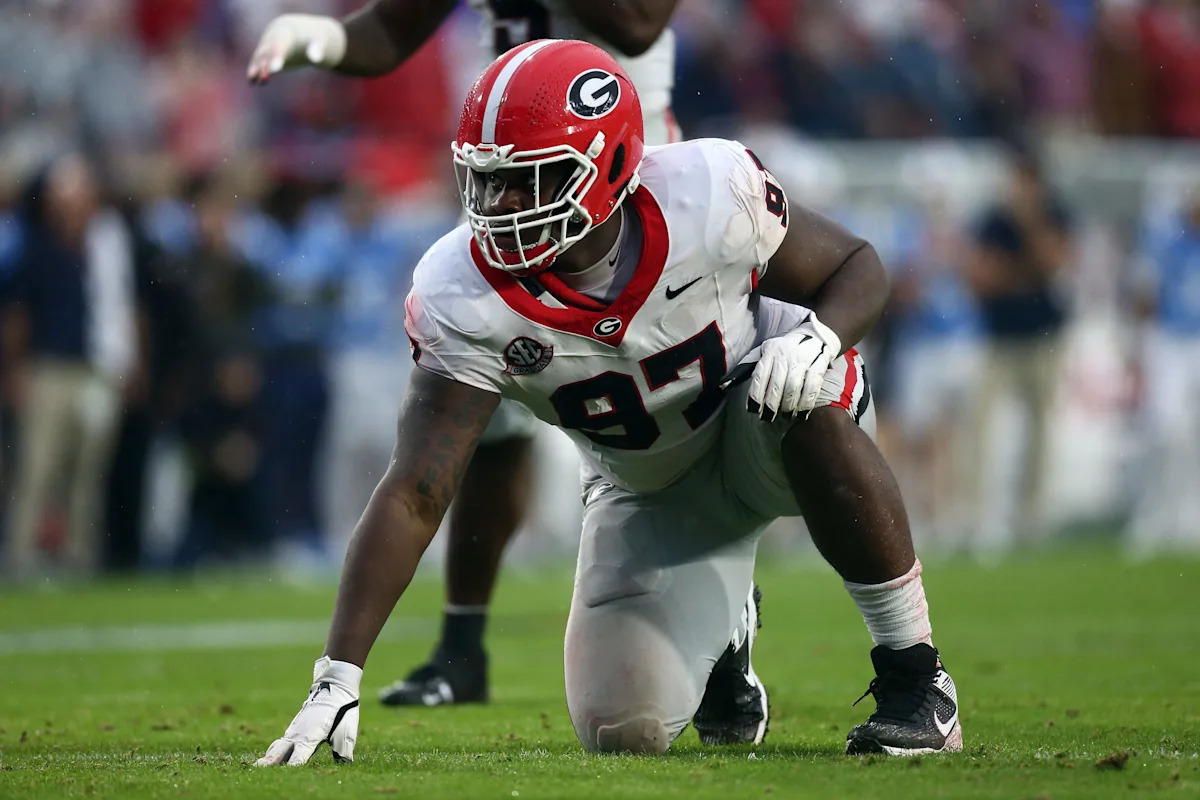
Georgia Bulldogs defensive line commitment Seven Cloud has been committed to Georgia since Dec. 2024. Cloud is the nation’s top-ranked junior college prospect. The 6-foot-4, 300-pound defensive lineman plays JUCO for Butler Community College in El Dorado, Kansas.
Cloud is from Atlanta, Georgia, and played high school football for McEachern High School. He’s ranked as a three-star recruit, but could provide an immediate impact as a member of the class of 2026. Cloud posted 5.5 sacks and 48 tackles during his first season with Butler in 2024.
Advertisement
Now, Cloud has signed a name, image and likeness representation deal with Rosenhaus Sports, which could be a sign indicating that his recruitment is changing or that he’s looking to maximize his NIL earnings.
Georgia recently had a major recruiting miss with the No. 1 recruit in the country, Jackson Cantwell, who committed the Miami Hurricanes. Cantwell was also represented by Rosenhaus Sports and sports agent Drew Rosenhaus.
Despite Cloud closing his recruitment in April, it still appears that he’s considering other options. Cloud has upcoming official visits with South Carolina, Florida State, LSU, North Carolina and Georgia, per 247Sports.
This article originally appeared on UGA Wire: Top UGA commit signs NIL representation deal with Rosenhaus Sports
NIL
Longshore and McKnight: College Sports Commission attempts to restore balance, transfer portal diminishing fan enthusiasm for recruiting, and more…
On today’s episode of Longshore and McKnight, John and Barry wade into the looming transformation of college athletics governance, discussing a proposed College Sports Commission drafted by power conference officials to curb state-level NIL law circumvention. Barry McKnight noted the urgency: “It’s got to happen sooner, much than way later,” as July 1 looms for […]
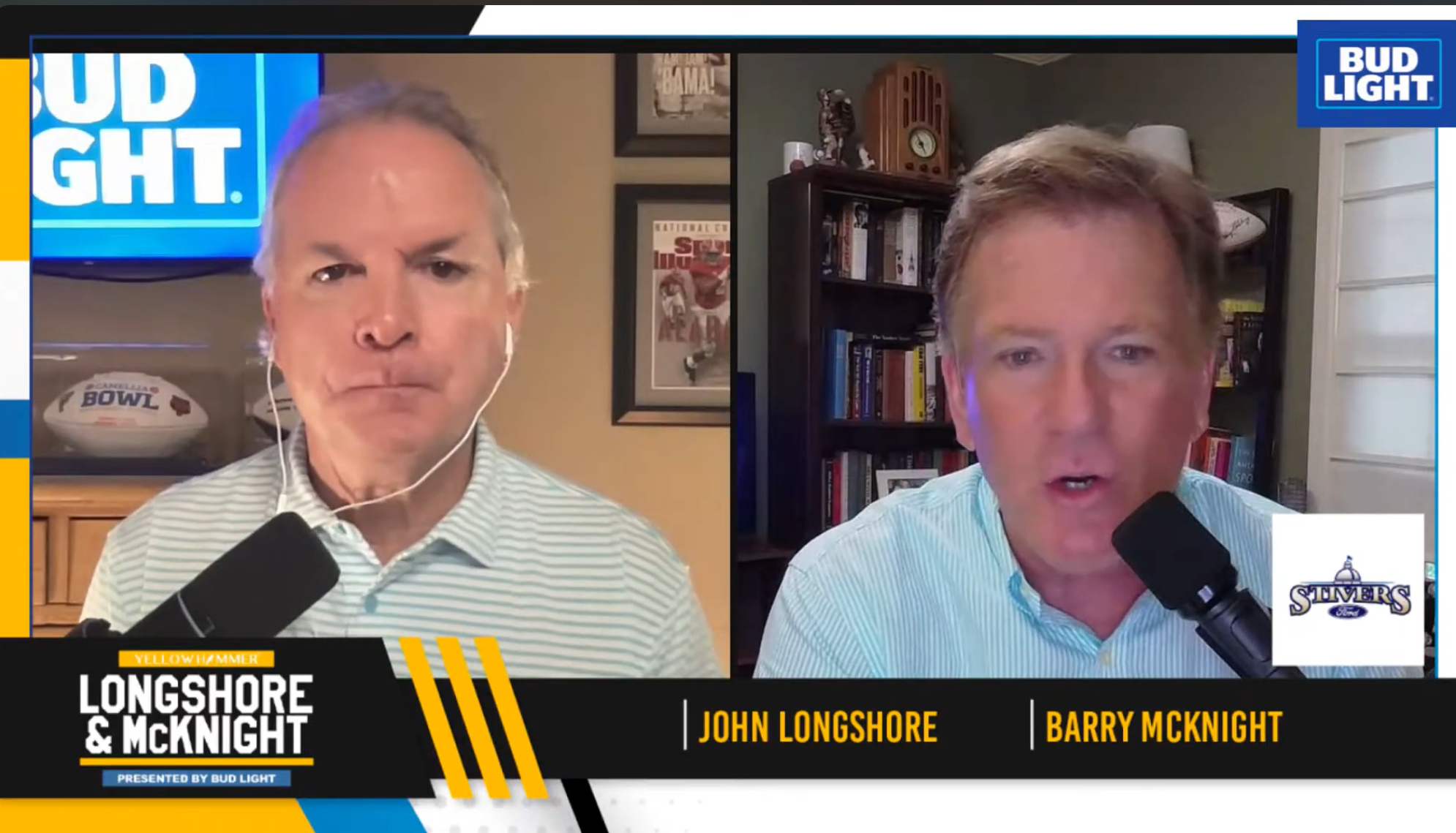
On today’s episode of Longshore and McKnight, John and Barry wade into the looming transformation of college athletics governance, discussing a proposed College Sports Commission drafted by power conference officials to curb state-level NIL law circumvention.
Barry McKnight noted the urgency: “It’s got to happen sooner, much than way later,” as July 1 looms for implementation tied to the House settlement. The proposed commission would require schools to waive legal rights and comply with unified rules or face exclusion from NCAA membership, aiming to restore competitive balance and enforceable standards amid concerns that college sports are becoming unsustainable.
Catch live episodes of Longshore and McKnight daily on YouTube, Spotify, and on Yellowhammer News
The show also tackled skyrocketing college football ticket prices, dwindling fan enthusiasm for recruiting, and the future of Auburn athletics. Brian Matthews of AuburnSports.com joined the show, citing how NIL and the transfer portal have “taken away some of that interest” from traditional recruiting excitement. Matthews praised Auburn’s roster rebuild and forecasted an 8–9 win season is critical for Hugh Freeze to avoid fan unrest. Alabama and Auburn baseball postseason hopes, NFL scheduling quirks for the Jaguars, and even Charles Barkley’s NIL skepticism rounded out the show.
NIL
College football CEO another NCAA failure waiting to happen
JD Vance fumbles Ohio State title trophy at White House event Ryan Day and the Ohio State Buckeye’s football team were honored at the White House for their 2024 national championship victory. Let me try and understand this, because I’m a little fuzzy after decades of deceit and distrust. It now appears that college […]

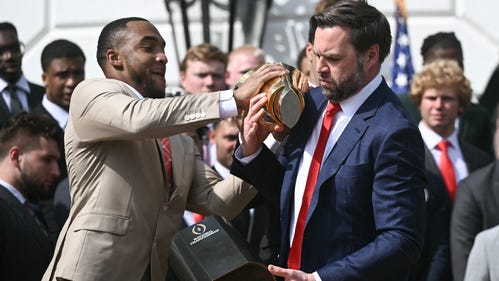
JD Vance fumbles Ohio State title trophy at White House event
Ryan Day and the Ohio State Buckeye’s football team were honored at the White House for their 2024 national championship victory.
Let me try and understand this, because I’m a little fuzzy after decades of deceit and distrust.
It now appears that college football is headed toward the implementation of a commissioner, a czar of sorts who will control enforcement and whose rulings will be final.
Unless, of course, you want to head to arbitration.
A commissioner, or CEO or whatever you want to call him or her, whose office will control oversight of all things NIL and declare what deals are within fair-market range.
In a free-market economy.
A commissioner who, despite this brand new power and influence given to them by university presidents (see: fox, meet henhouse), will have zero – and when I say zero, I mean zero – control over player movement.
The most pressing problem for which there is no legal answer, short of players becoming employees and collectively bargaining.
A commissioner who will be paid a boatload of cash to do, in theory, what current NCAA president Charlie Baker should’ve been doing all along — if given the opportunity.
Apparently, a man who ran one of the largest state budgets as governor of Massachusetts needs another multimillion dollar salaried colleague to pull college sports from its self-induced mess.
I have no doubt this, too, will be a resounding success. That’s sarcasm, everyone.
Want to blame someone for this never-ending, unwieldy morass? Blame the eggheads at the very top of the food chain.
The same university presidents that have no business sticking their noses in the business of college sports, but do so, anyway. Why, you ask?
Because the last thing they need is for athletics to encroach onto academics, for athletics to need financial support from the university. Most university presidents are hired for fundraising first, and everything else second.
That everything else doesn’t include paying for athletics.
So don’t blame SEC commissioner Greg Sankey, or Big Ten commissioner Tony Petitti for the ills of college football. They’re doing what their respective university presidents – their bosses who sign their paychecks – tell them to do.
The same university presidents who have lost in nearly every single legal case brought against their association of schools.
What’s constantly lost in these inevitable screwups is the NCAA is nothing more than a conglomeration of 300-plus university presidents, each with egos the size of Desmond Watson. These presidents vote each other and their subordinate athletic directors into various committees and subcommittees that eventually decide Boise State will be placed on probation for buying a recruit a bagel.
Or that North Carolina won’t be placed on probation because years of fake classes to keep athletes eligible were – and I still can’t believe I’m writing this – also available to the rest of the student population.
So excuse me if I’m a little hesitant about this latest iteration of change from a group of men and women at the highest level of higher education. The same group that not long ago swore up and down there would never be “second semester” football.
Now the College Football Playoff ends in late January, well into the second semester. And competes for television ratings against the big, bad NFL ― a losing proposition by anyone or anything that has tried.
The same university presidents who not long ago swore up and down that pay for play would never work for any number of reasons, the least of which was Title IX. There’s no way to pay men to play, and then pay women equally, they declared.
Women, they said, deserve the same opportunities as men.
Now we’re days away from a U.S. District judge potentially signing off on the House case – another devastating loss for the sharp legal minds at the NCAA – and more than $2 billion in back pay for former student athletes, complete with a future revenue sharing plan that will give nearly 90 percent of a salary pool of $20 million-23 million to football and men’s basketball.
But buddy, you better believe they have it figured out this time. This new commissioner or CEO or czar will solve all problems.
There’s no chance he’ll strike down an NIL deal because it isn’t fair, and the NCAA – or whatever they’ll eventually call the elite football-playing schools – won’t be sued and lose again.
Look, I have no law degree, but I did pay attention in college during ECON 101. The market dictates what services are worth.
Not some doofus plopped into a position by 300-plus university presidents, whose sole purpose is to protect their own asses at all cost.
Yeah, this new CEO will be a resounding success.
Matt Hayes is the senior national college football writer for USA TODAY Sports Network. Follow him on X at @MattHayesCFB.
NIL
Tennessee’s Zakai Zeigler files lawsuit against NCAA, challenging redshirt rule for fifth year of eligibility
Zakai Zeigler finished his athletic eligibility at Tennessee with the end of the Volunteers’ 2024-25 men’s basketball season. However, the guard has filed a lawsuit against the NCAA seeking a fifth year of eligibility. Zeigler has already played four seasons for Tennessee and didn’t begin his college career until 2021, one year after the 2020-21 […]
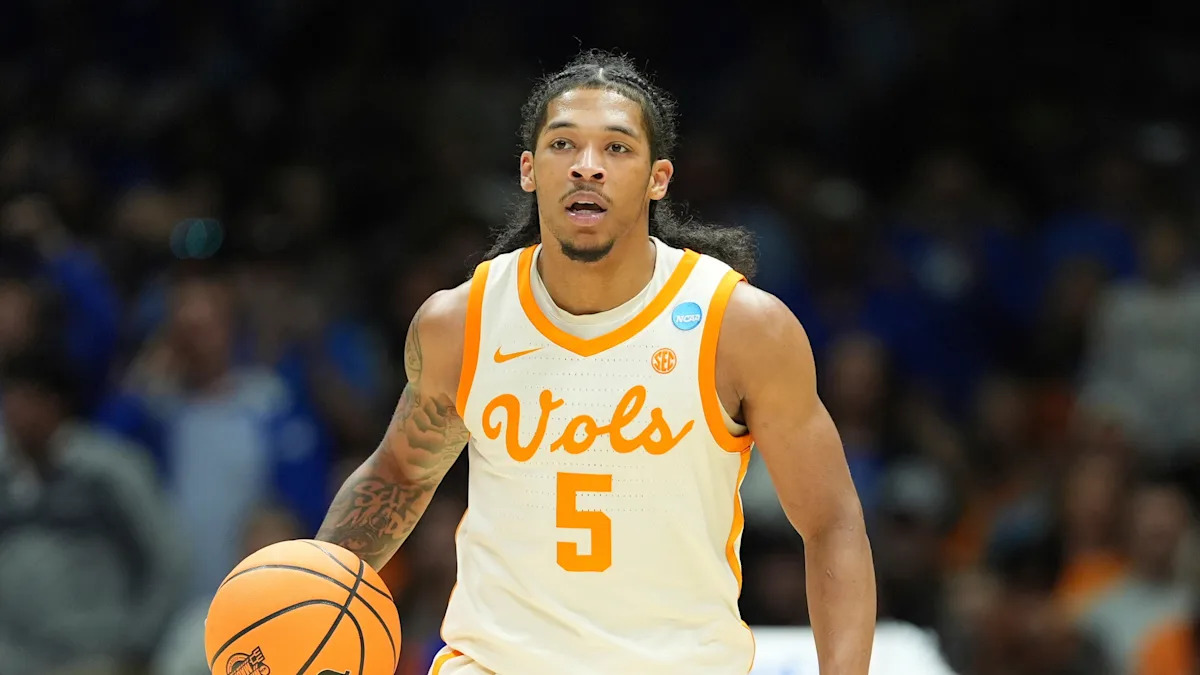
Zakai Zeigler finished his athletic eligibility at Tennessee with the end of the Volunteers’ 2024-25 men’s basketball season. However, the guard has filed a lawsuit against the NCAA seeking a fifth year of eligibility.
Zeigler has already played four seasons for Tennessee and didn’t begin his college career until 2021, one year after the 2020-21 class that was allowed one more year of eligibility lost during the COVID-19 pandemic.
Advertisement
In the lawsuit, filed in the Eastern District Court of Tennessee, Zeigler is seeking a preliminary injunction that would allow him to play the 2025-26 season. He is challenging the NCAA rule that an athlete has four years of eligibility within a five-year window.
Zeigler, 22, isn’t allowed an opportunity to earn NIL money for a fifth year because he’s used up all of his eligibility. As the lawsuit argues, that deprives him of a fifth year, “the most lucrative year of the eligibility window for the vast majority of athletes.”
How lucrative? The lawsuit argues that Zeigler could earn between $2 million and $4 million in a fifth year based on his record of success and visibility playing in the SEC. Those figures are projections from the Spyre Sports Group, which facilitates Tennessee’s NIL collective.
Advertisement
Athletes who receive a redshirt are allowed a fifth year of eligibility, which gives them one more year to earn NIL income. A freshman who was redshirted, for example, would still be able to earn NIL money even if he or she doesn’t play.
NIL
Why More and More Brands Are Sponsoring Women's Sports Leagues
The 2025 WNBA season kicked off on Friday, with seemingly more media attention than the NBA as well as more interest from brands. That’s not surprising given the growth in women’s sports in recent years. In fact, Deloitte projects women’s sports to generate $2.35 billion in 2025, a 25% jump from last year’s record-breaking $1.88 […]

.jpg)
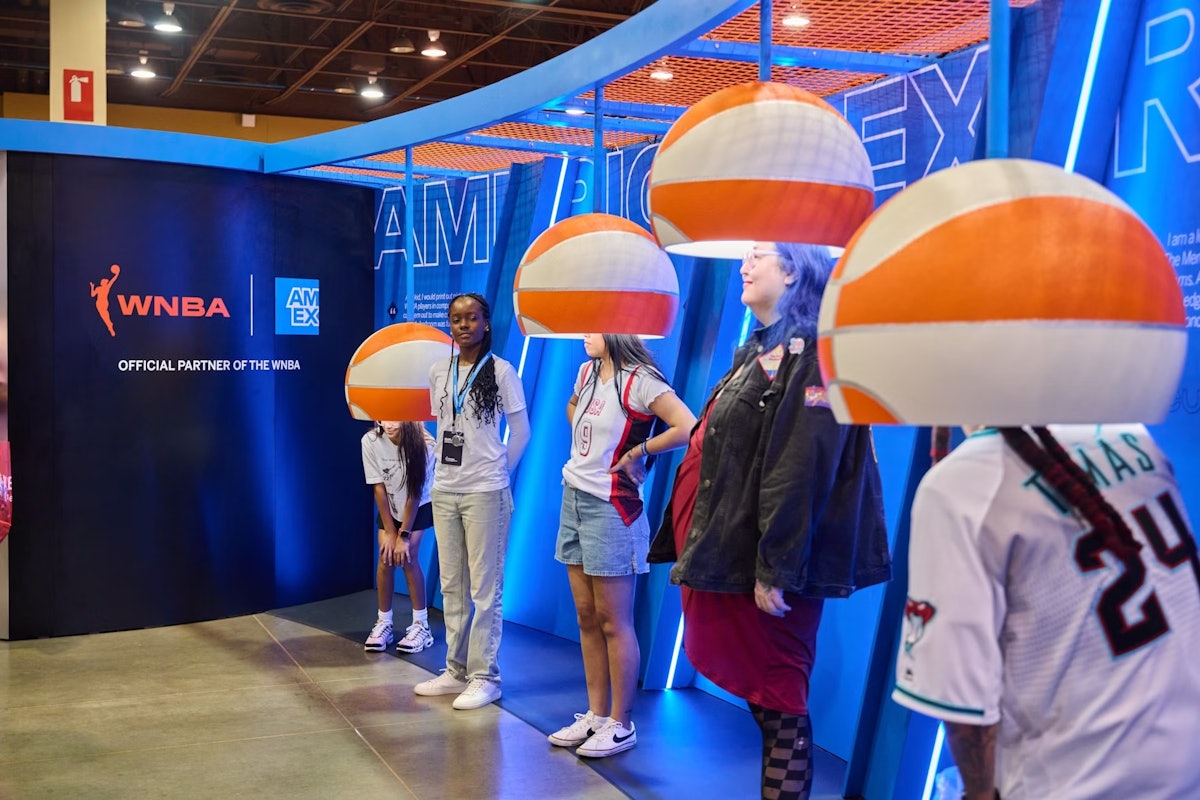
The 2025 WNBA season kicked off on Friday, with seemingly more media attention than the NBA as well as more interest from brands. That’s not surprising given the growth in women’s sports in recent years.
In fact, Deloitte projects women’s sports to generate $2.35 billion in 2025, a 25% jump from last year’s record-breaking $1.88 billion, according to Deloitte Global’s report “Beyond the Billion-dollar Barrier: Charting the Next Phase of Growth.”
Sponsorship deals across major women’s sports properties increased by 12% year over year during their 2024-25 seasons, growing at a rate almost 50% faster than major men’s pro leagues experienced last year, according to SponsorUnited’s Women in Sports Report. (ICYMI: Fenty Beauty and Fenty Skin and luggage brand Away recently teamed up with the WNBA’s New York Liberty.)
The National Women’s Soccer League (NWSL) and the WNBA saw the biggest increase in sponsorship deals, with one of those being Gatorade. The beverage brand boasts five NWSL partnerships with teams, in addition to being a sponsor of the WNBA, which it’s been since the beginning in 1997.
“Gatorade has long been a champion of women’s sports, from being a founding partner of the WNBA to signing trailblazing athletes like Serena Williams, A’ja Wilson, Mallory Swanson, Caitlin Clark, JuJu Watkins, and Paige Bueckers,” said a Gatorade spokesperson about the brand’s investment in women’s sports leagues. The brand is active across five women’s professional sports leagues—the Women’s Tennis Association, LPGA, WNBA, NWSL, and Liga MX Femenil, a professional women’s football league in Mexico.
“Our commitment today remains just as strong. We continue to invest in top-tier women’s sports talent and team partnerships, fueling athletes across every level of play and celebrating their impact on and off the field. For us, it’s about showing up consistently and authentically to help move the game forward.”
While major brands like State Farm, Microsoft, and Michelob Ultra are looking to the big leagues like the WNBA and NWSL, brands like BIC are scoring with up-and-coming sports—a trend noted by Deloitte, which reports that cricket, rugby, and volleyball are attracting investment.
Earlier this month, BIC Soleil announced its title sponsorship of the Pro Volleyball Federation (PVF) Championship tournament, which was held at Lee’s Family Forum in Henderson, Nev., just outside Las Vegas, May 9-11. This partnership builds on the brand’s presence in women’s sports, following its debut as the Official Razor of the Professional Women’s Hockey League (PWHL) during its inaugural season last year and continuing this year.
“We see a real connection between the PVF’s passionate fan base and their talented players and the confident, dynamic women who choose BIC Soleil razors,” said Bethridge Toovell, vice president and head of global communications at BIC. “Following along during the PVF’s impressive first season and their clear dedication to uplifting women made the championship sponsorship opportunity a compelling one. It aligns perfectly with our values and our desire to support organizations that empower and enable women to shine.”
As part of the sponsorship, BIC Soleil debuted the “Set a BIC, Score a BIC” commercial, which cleverly riffs on a real volleyball move called a “bic” —a fast, back-row attack designed to surprise opponents. Also, when a “bic” happened during the tournament, viewers at home and attendees at the games were prompted to scan a QR code, leading them to BIC’s Instagram page for a chance to win BIC x PVF merchandise.
There was also on-site Soleil razor sampling during the tournament. Toovell said that the campaign generated over 150,000 organic impressions and an average engagement rate of 3.68%. “With the campaign just running for a few days, this enthusiastic response exceeded expectations, highlighting the exciting momentum and growing support for this emerging league,” she added.
Earlier this month, Soleil brand ambassador and PWHL Toronto Sceptres player Emma Maltais welcomed 20-plus guests to the team’s final home season game. The venue, Coca-Cola Coliseum, was transformed into a floral oasis, where the pinks and golds of the Soleil Glide razor were brought to life. Influencers and media were able to watch the game, engage with Maltais, learn more about the BIC Soleil Glide razor, and capture content.
Guests received custom gift bags filled with Soleil Glide razors, a Tangle Teezer brush, luxe skincare goodies, and an Emma Maltais hockey card. Toovell said that the PWHL “partnership is about more than just shaving. It’s about helping women feel empowered, confident, and ready to shine in all aspects of their lives.”
“For brands like BIC Soleil, whose very essence is about celebrating women, investing in women’s sports is a powerful and direct way to build lasting connections with their target market,” she added.
NIL
Dan McDonnell disgusted by tampering in NCAA
This episode of The C.L. Brown Show features Louisville baseball coach Dan McDonnell, the longest-tenured coach in the school’s athletics department. McDonnell discusses how playing the ACC’s top teams in the regular season has prepared the Cards for the postseason. He tells how he predicted freshman Tague Davis, who leads the team with 18 home runs, would […]
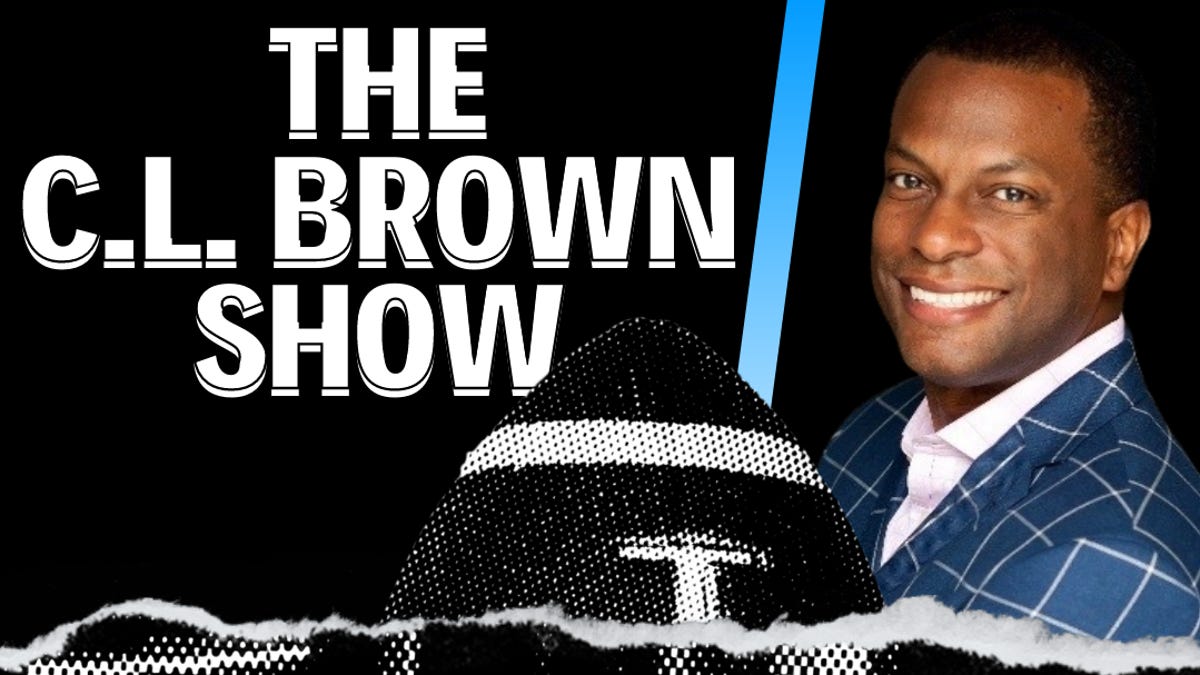
This episode of The C.L. Brown Show features Louisville baseball coach Dan McDonnell, the longest-tenured coach in the school’s athletics department.
McDonnell discusses how playing the ACC’s top teams in the regular season has prepared the Cards for the postseason. He tells how he predicted freshman Tague Davis, who leads the team with 18 home runs, would have a great year and how that would lead other schools to try to get him to transfer. He also explains how Louisville won’t ever be the Yankees or Dodgers of college baseball with its financial support, but the Cards can’t become the A’s, either.
A new episode of this podcast, hosted by Courier Journal sports columnist C.L. Brown, posts each Wednesday. You can listen to The C.L. Brown Show on Apple Podcasts, Spotify, Google Podcast, Audible, CastBox and iHeartRadio, among others.
Reach sports columnist C.L. Brown at clbrown1@gannett.com, follow him on X at @CLBrownHoops and subscribe to his newsletter at profile.courier-journal.com/newsletters/cl-browns-latest to make sure you never miss one of his columns.
-

 Fashion3 weeks ago
Fashion3 weeks agoHow to watch Avalanche vs. Stars Game 7 FREE stream today
-

 High School Sports2 weeks ago
High School Sports2 weeks agoWeb exclusive
-

 Sports2 weeks ago
Sports2 weeks agoPrinceton University
-

 Sports2 weeks ago
Sports2 weeks ago2025 NCAA softball bracket: Women’s College World Series scores, schedule
-

 Motorsports2 weeks ago
Motorsports2 weeks agoBowman Gray is the site of NASCAR’S “Advance Auto Parts Night at the Races” this Saturday
-

 NIL2 weeks ago
NIL2 weeks ago2025 Big Ten Softball Tournament Bracket: Updated matchups, scores, schedule
-

 NIL2 weeks ago
NIL2 weeks agoPatty Gasso confirms Sophia Bordi will not finish season with Oklahoma softball
-

 Motorsports2 weeks ago
Motorsports2 weeks agoMOTORSPORTS: Three local track set to open this week | Sports
-

 Motorsports2 weeks ago
Motorsports2 weeks ago$1.5 Billion Legal Powerhouse Announces Multi-Year NASCAR Deal With Kyle Busch
-
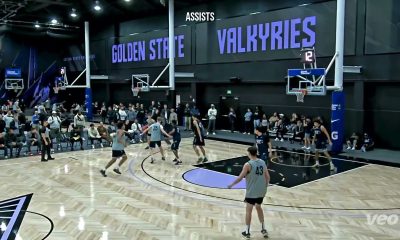
 High School Sports3 weeks ago
High School Sports3 weeks agoMaryland Basketball Recruiting





























